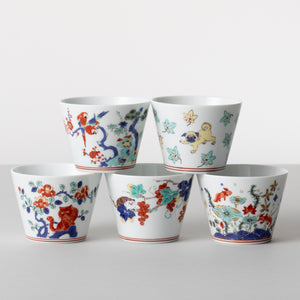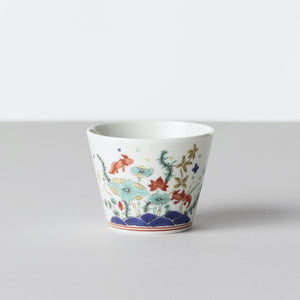









Sobachoco -Cat
Capacity: 170 ml
Material PorcelainProducing Area: Hasami Town, Nagasaki Prefecture
Imari porcelain of the Edo period featured particularly delicate and gorgeous paintings that fascinated the West and would later leave a lasting impact on the production of ceramics in Europe. Among Edo-period Imari porcelain, Enpo-era pieces are thought to be the most elegant. Based on its delicate shades and styles, Iro-e combines traditional designs with household pets.
Sparrow
We have given the traditional, auspicious kachomon flower-and-bird pattern a twist by perching a brightly-colored macaw on the branch of a plum tree.
Dog
The deer and maple shika-momiji motif has long been a harbinger of autumn across many Japanese crafts. The deer, often portrayed mid-leap, is replaced with a playful, prancing pug.
Cat
The piercing gaze of an exotic shorthair replaces the tiger as a symbol of good luck inside this tree and flower motif. Rest assured that this cat will keep an eye on your home.
Salamander
The traditional gyomo-mon pattern of fish and seaweed is replaced with axolotls, or Mexican salamanders, whose popularity soared in 1980s’ Japan. Do not put overglaze products in the dishwasher.
Hedgehog
The traditional motif of a squirrel on a grapevine symbolizes fertility and longevity and has long been considered a good luck charm in Japan. Here, we’ve taken the squirrel, once a symbol of fertility due to its resemblance to the rat, and swapped it for a cute four-toed hedgehog.









